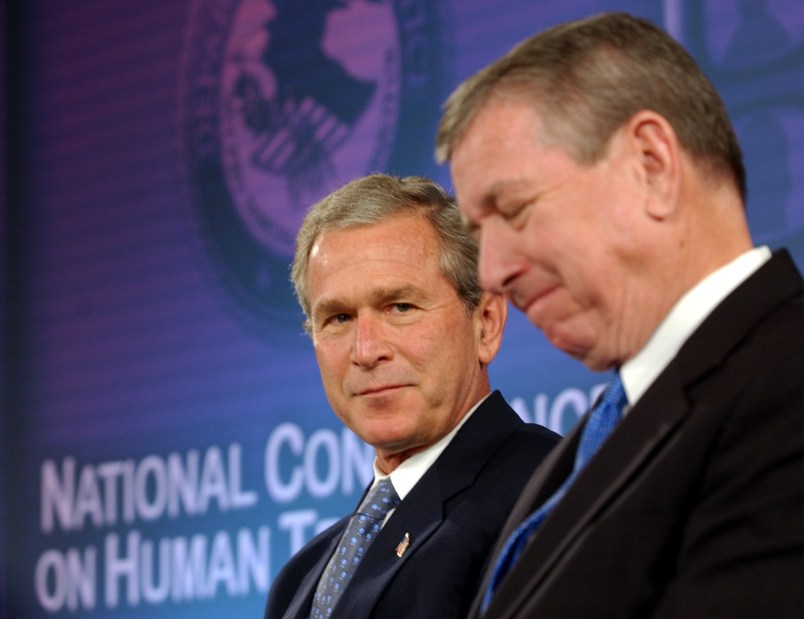A pair of memos released by the Justice Department late Friday night provide “the fullest public airing to date of the Bush administration’s legal justification for the warrantless wiretapping of Americans’ phone calls and e-mails,” according to the Washington Post.
The memos, obtained by the American Civil Liberties Union by way of a Freedom of Information Act lawsuit, were written by Jack Goldsmith, the former Assistant Attorney General who helmed George W. Bush’s Office of Legal Counsel.
Goldsmith used the memos to argue that the president was within his constitutional authority to implement the program that began after the 9/11 attacks but wasn’t revealed until the New York Times reported on its existence in 2005.
In 2007, the Bush administration changed its policy, bringing the program under court oversight.
From WaPo:
“We conclude only that when the nation has been thrust into an armed conflict by a foreign attack on the United States and the president determines in his role as commander in chief . . . that it is essential for defense against a further foreign attack to use the [wiretapping] capabilities of the [National Security Agency] within the United States, he has inherent constitutional authority” to order warrantless wiretapping — “an authority that Congress cannot curtail,” Goldsmith wrote in a redacted 108-page memo dated May 6, 2004.
The program, code-named Stellar Wind, enabled the NSA to collect communications on U.S. soil when at least one party was believed to be a member of al-Qaeda or an al-Qaeda affiliate, and at least one end of the communication was overseas.







OK, I give up. What’s “inherent constitutional authority,… an authority that Congress cannot curtail?” That sounds a lot like, “If the President does it, it’s not illegal.”
What justification is that? It’s just an assertion. Where’s the arguments and basis for such an assertion. Nowhere.
GWB made a lot of policy claims - no laws and Congress let him get away with it. SAD.
Is it too late to hang Bush and Cheney?
The Bush administration MO:
If you can find a lawyer to write down on a piece of paper that something you want to do is okay, you’re in the clear. The courts are just a liberal nuisance. Hired counsel for the win!